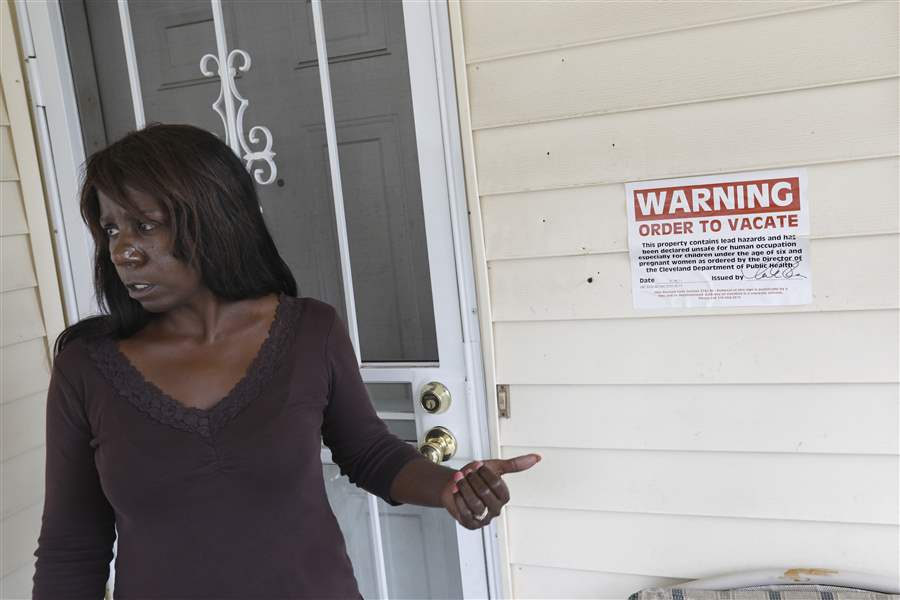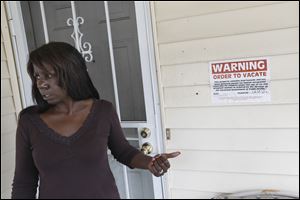
EDITORIAL
Real people facing lead threat
12/26/2017
Falisa Turner and her husband James said they were frustrated with the unclear communication and direction from their local Board of Health after their home was one of nearly 90 in Cuyahoga County for whom the Board of Health has issued Orders of Eviction.
The Blade/Katie Rausch
Buy This Image
Since Toledo’s first-of-its kind lead-safe ordinance was first proposed in city council nearly three years ago, debate about the issue has been fierce.
Disagreements have mainly focused on policy and implementation. Is it fair to apply the ordinance to only a portion of the city’s rental housing? Can authorities create the infrastructure to implement the ordinance and train enough inspectors before the first deadlines?
RELATED: Renters often left in the dark about home lead levels, health risks
These policy-level political fights will most certainly rage on. In the meantime, however, what gets lost in those debates are the faces and the fates of some of the city’s most vulnerable citizens.

Falisa Turner and her husband James said they were frustrated with the unclear communication and direction from their local Board of Health after their home was one of nearly 90 in Cuyahoga County for whom the Board of Health has issued Orders of Eviction.
A Blade investigation of homes around Ohio’s largest metropolitan areas showed that about 30-50 percent of houses that should be vacant because of untreated lead hazards were occupied.
The Ohio Department of Health requires authorities to tag homes after children who live or spend time there test positive for high levels of lead. Lead paint found in pre-1978 housing stock is the main source of this contamination. Many of the homes identified by ODH have telltale danger signs of chipped or peeling paint, original window frames and sashes, and dust buildup.
Lead poisoning can cause damage to a child’s brain and nervous system, slow growth and development, create learning and behavior problems, and cause hearing and speech problems, according to the Centers for Disease Control and Prevention.
In the Toledo, Columbus, Cincinnati, and Cleveland metropolitan areas, many occupants of homes identified as dangerous by ODH said they did not know they were not supposed to be living there.
Sadly, many renters and other occupants did know that their homes were dangerous because their children and grandchildren have elevated lead levels in their blood.
Frustrated parents and grandparents in these homes tell similar stories of confusing instructions from health officials and incomplete information from landlords.
One Cleveland father with 3 and 4-year-old daughters said he is worried, but does not know if his apartment is considered dangerous just because his upstairs neighbor’s is.
Click here to view more Blade editorials
“They told me to get my kids tested, and I did,” the man said.
Toledo’s ordinance takes a bold step forward to address the fears and the real dangers for families like this. It is easy to forget that they are the reason it is important to tackle the threat of lead in the region’s older housing stock.
Tackling the public health problem of lead contamination will never be simple. Thousands and thousands of older homes and public buildings present a threat to children and adults alike in Ohio. So creating the policies to address it and helping property owners find and remove lead contamination is going to be tedious and difficult.
But while elected leaders, public health officials, and advocates for property owners fight out the details, we all must keep in mind the families who need help with this threat.